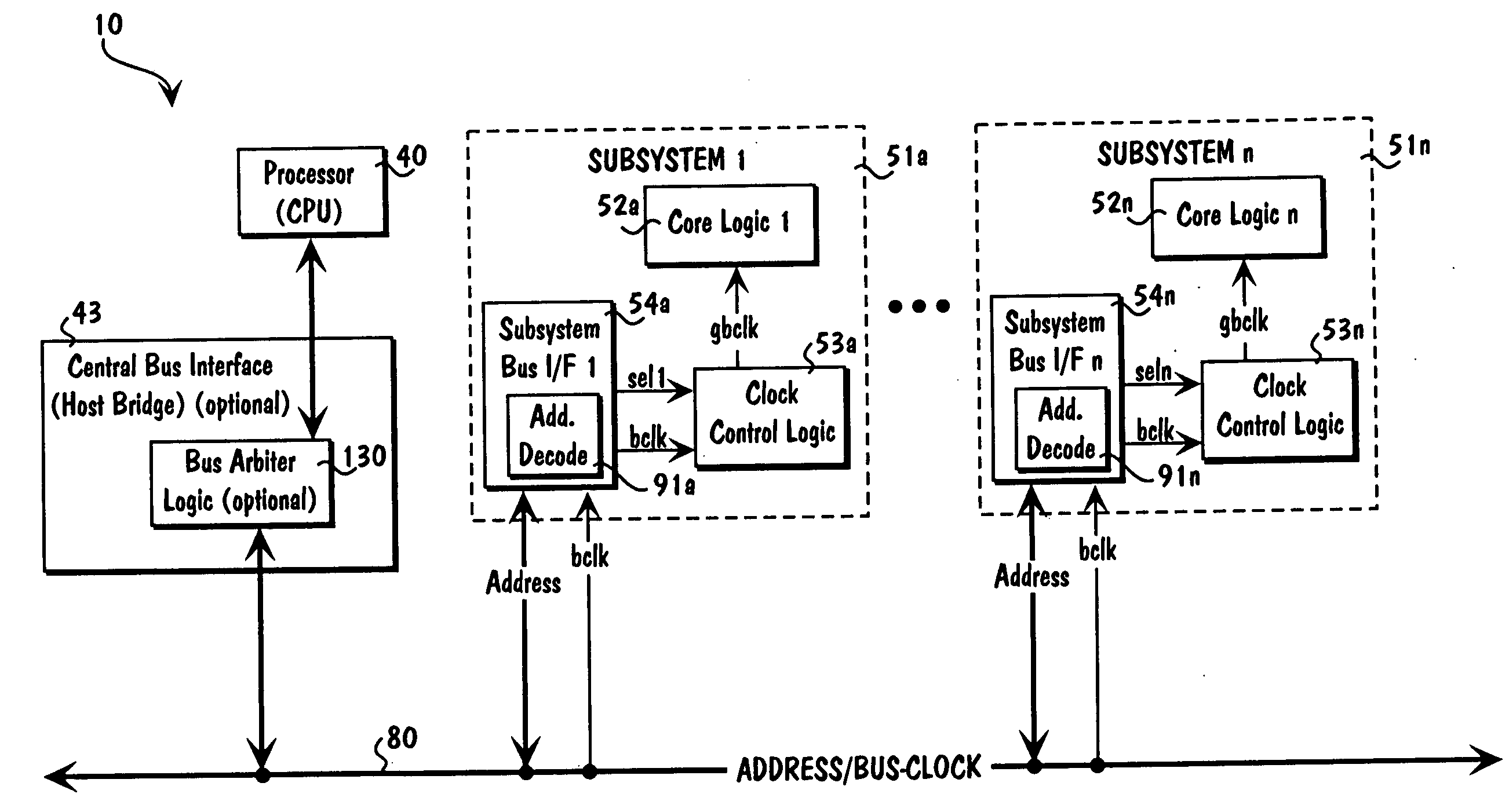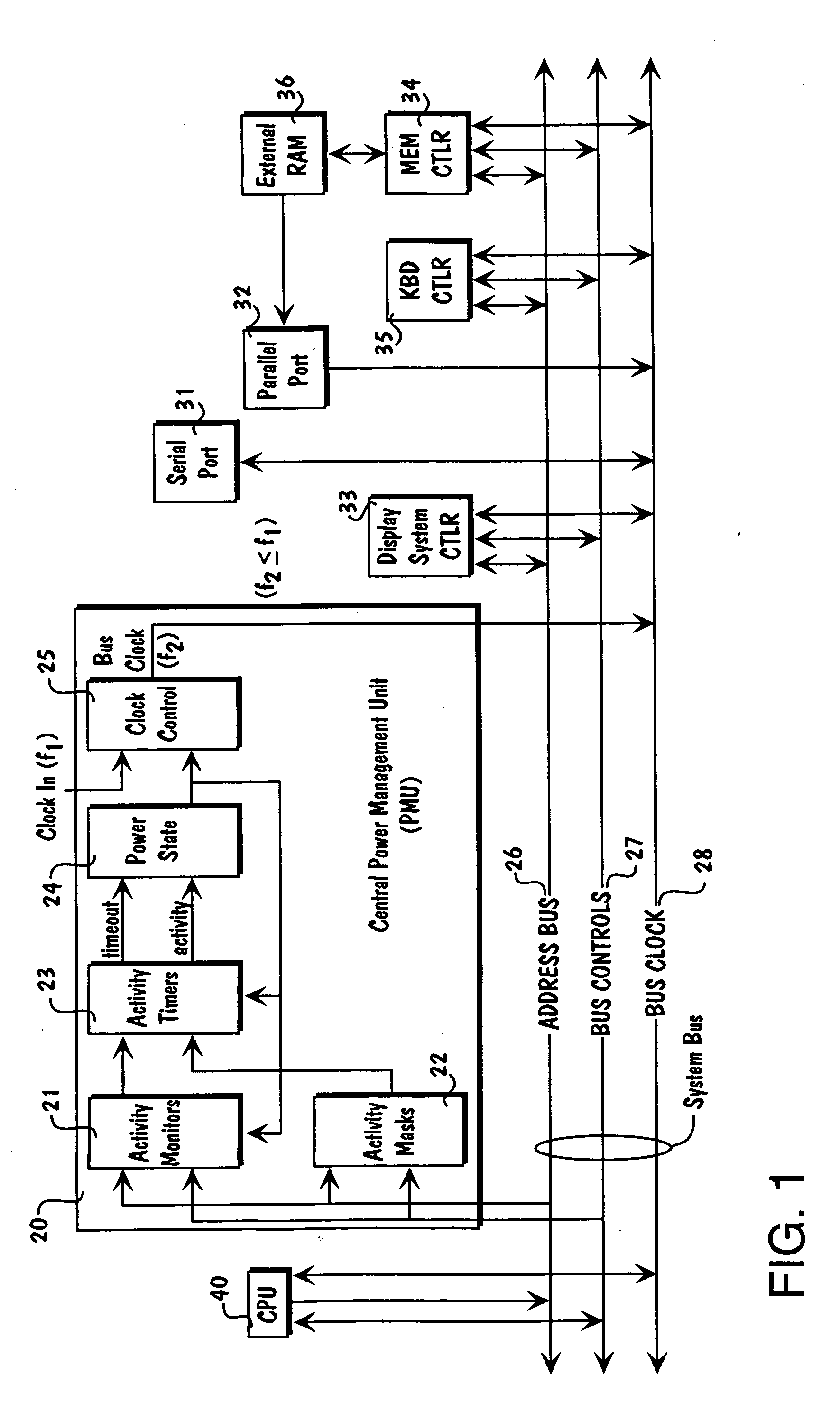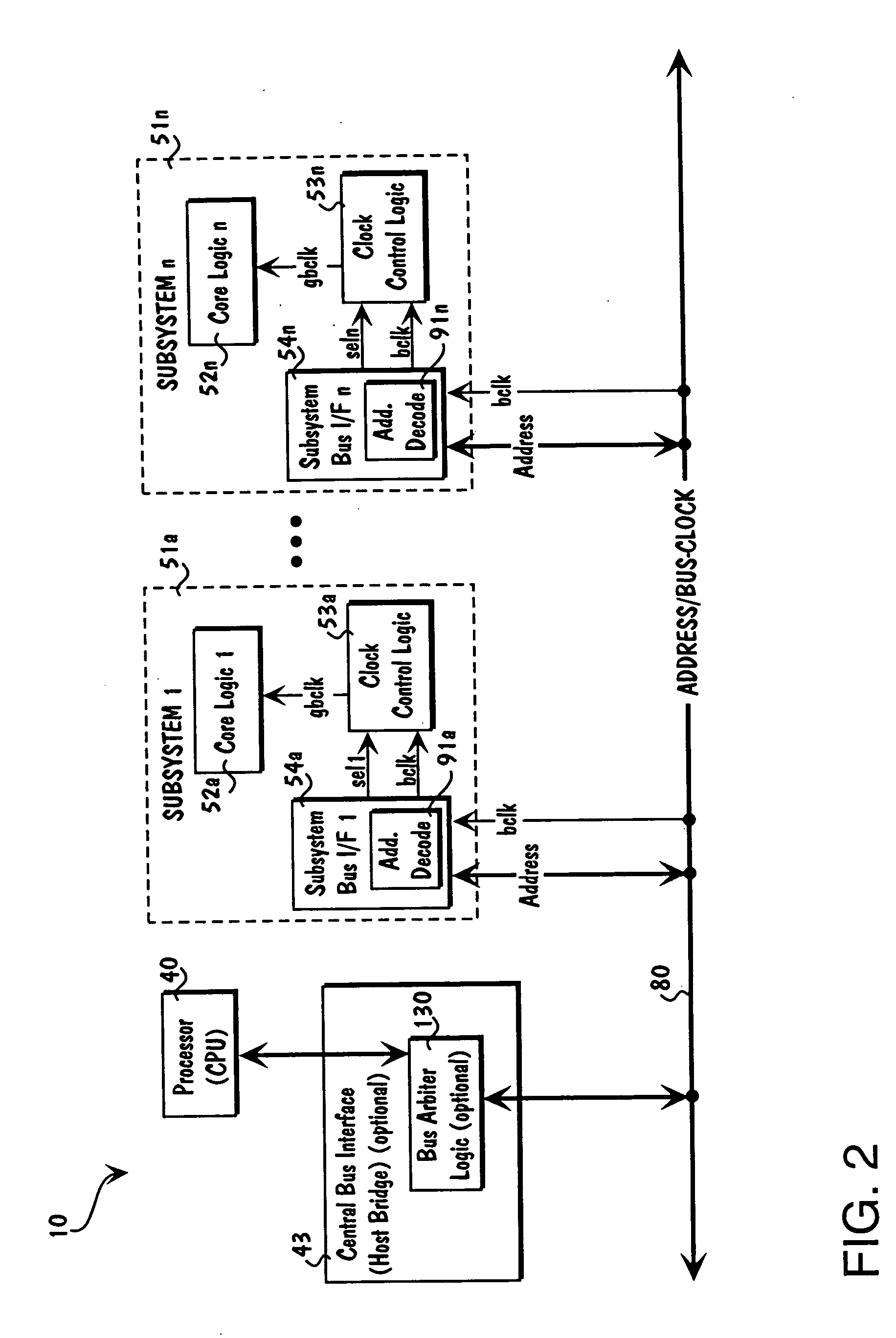Method for modular design of a computer system-on-a-chip
a computer system and modular design technology, applied in the direction of liquid/fluent solid measurement, sustainable buildings, instruments, etc., can solve the problems of large power consumption, unnecessarily long wait time for computer systems, and large size and capacity of computer systems, so as to reduce power consumption, minimize power consumption, and reduce the effect of computer system power consumption
- Summary
- Abstract
- Description
- Claims
- Application Information
AI Technical Summary
Benefits of technology
Problems solved by technology
Method used
Image
Examples
second embodiment
the inventive power management system and method is shown in FIG. 3, which includes additional features or enhancements beyond those shown and described relative to the FIG. 2 embodiment. The overall power management of the computer system 10 may optionally, but advantageously, also include a centralized power management unit 42 of conventional type. This embodiment also includes a central bus interface 43 having bus clock frequency control circuitry 45 and bus clock frequency change notification circuitry 44, the later two being useful to provide an overall decrease in power consumption as a result of slower switch frequency and fewer switch transitions, and to assist in the maintenance of any real time clocks, which may be present in certain of the subsystems 51c, . . . , 51n.
As used herein, the term “subsystem” means any circuit, device, component subsystems, or the like, that interfaces to the other computer system circuits, devices, system resources or components. Subsystems ...
PUM
 Login to View More
Login to View More Abstract
Description
Claims
Application Information
 Login to View More
Login to View More - R&D
- Intellectual Property
- Life Sciences
- Materials
- Tech Scout
- Unparalleled Data Quality
- Higher Quality Content
- 60% Fewer Hallucinations
Browse by: Latest US Patents, China's latest patents, Technical Efficacy Thesaurus, Application Domain, Technology Topic, Popular Technical Reports.
© 2025 PatSnap. All rights reserved.Legal|Privacy policy|Modern Slavery Act Transparency Statement|Sitemap|About US| Contact US: help@patsnap.com



